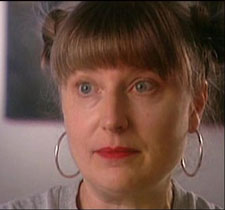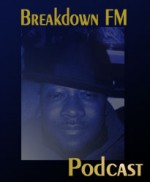 The meeting of Punk and Hip Hop cultures in the late 70s early 80s is an overlooked often downplayed facet of Hip Hop History. Most people think of Run DMC‘s Rock Box and later their collaboration with Aerosmith when they think of Hip Hop merging with Rock-N-Roll. The truth of the matter is that in a very organic way, artists from both cultures broke bread and came to respect each other not so much because of the music, but because of the ‘rebellious’ attitude and spirit that personified both groups.
The meeting of Punk and Hip Hop cultures in the late 70s early 80s is an overlooked often downplayed facet of Hip Hop History. Most people think of Run DMC‘s Rock Box and later their collaboration with Aerosmith when they think of Hip Hop merging with Rock-N-Roll. The truth of the matter is that in a very organic way, artists from both cultures broke bread and came to respect each other not so much because of the music, but because of the ‘rebellious’ attitude and spirit that personified both groups.
With last weeks passing of punk icon turned Hip Hop icon Malcolm McLaren, the details of punk Hip Hop unions began to be revisited. We sat down with one of the key bridge builders to both worlds Brooklyn native Fab 5 Freddy to get his perspective. Fab started out as a graffiti artist and later went on to rap and produce. His record Change the Beat is a classic. here Fab raps in French and at the end provides us with the classic line that every DJ worth his weight has used to scratch.. Ahhh This Stuff is Really Fresh. It was one of the earliest instances of a vocorder being used in Hip Hop. later on Fab5 became the face of Yo MTV Raps.
He now heads up the VH1 Hip Hop Honors. He noted that this year they will be honoring the pioneers of the South. We spoke to him about those pioneering days and he noted that his love of art is what took him downtown to the thriving Village scene that hosted Punk, New Wave and artsy types..Fab 5 noted that his partner in crime (art crime) was the late Jean Michel Basquiat and together they attended a lot of the shows and parties and met folks like Deborah Harry and her man Chris Stein from the group Blondie. The group would later immortalize Fab 5 in the song Rapture where they shouted him out. In our interview Fab 5 explains how that song came about.
We talked about Fab’s first encounter with Malcolm Mclaren. He noted that it was a promoter named Kool Lady Blue best known for her work at the Roxy and the Negril who introduced the pair and that Fab wasn’t really feeling McLaren. He explained that his good friend Johnny Lydon aka Johnny Rotten of the Sex Pistols and later PIL had accused McLaren of ripping off the group. As a result when McLaren explained to Fab 5 that he wanted to go uptown to the Bronx and experience the emerging Hip Hop scene, he wasn’t gonna be ‘that guy’ to make it happen.
Fab went on to explain that he was impressed with the way Mclaren maneuvered. Not only did he make it up to the Bronx but he eventually teamed up with two guys Larry Price aka Se’Divine Price and Ronald Larkins Jr aka JazzyJust the Superstarwho were members of the 5% Nation who had started doing one of the earliest Hip Hop radio shows back in 1979 on WHBI. . The duo went by the name World Famous Supreme Team and they along with Mclaren made history by putting out some of Hip Hop’s ealiest hits including ‘Buffalo Gals’ and ‘Hey DJ’.. Fab explained what made Mclaren such a genius was his ability to capture not only the early feel of Hip Hop but also the groups popular radio show . He was ground breaking in his production and willingness to push the envelop.
Fab added that the Hip Hop -Punk fusion came about because there was a community of artists who were open minded and willing to collaborate.
We talked about the groundbreaking role the Clash played. Fab noted that the London based group was influenced by reggae and saw similarities with that and early rap. They did a weeks long stint at a club called Bond where they decided to show support for Hip Hop by inviting a popular artist or deejay to open up for them each night. The line up included Grand Master Flash, Kurtis Blow, Afrika Bambaataa, Spoonie G and Funky 4 Plus One More. he said rthe crowd was hostile. It would be like a rapper performing at a Tea Party. Things got so bad the Clash had to come out on one of the nights and let folks know they were in full support of Hip Hop. Later on Mick Jones would hook up with Futura 2000 to do a song called ‘Escapades of Futura’ http://www.youtube.com/watch?v=gR9K2ISCUqg
During our interview Fab talked about how the merger of Punk and Hip Hop helped paved the way for early Hip Hop journalism primarily with writers Barry Cooper and Greg Tate who were fixtures in the downtown art scene and started penning stories about Hip Hop.
Below is a link to the interview we did with Fab 5..
Breakdown FM Interview w/ Fab 5 Freddy How Hip Hop Met Punk
Here is a shortened video version of the podcast
http://www.youtube.com/watch?v=EyxNc-7cA7E






 The scariest thing about the Motown legacy, as my father likes to argue, is that you could have gone into any Black American community at the time and found raw talents equal to any of the label’s polished fruit:
The scariest thing about the Motown legacy, as my father likes to argue, is that you could have gone into any Black American community at the time and found raw talents equal to any of the label’s polished fruit:  Of course, Michael’s careerism had a steep downside, tripped onto a slippery slope, when he decided that his public and private life could be merged, orchestrated, and manipulated for publicity and mass consumption as masterfully as his albums and videos. I certainly began to feel this when word got out of him sleeping in a hyperbaric chamber or trying to buy the Elephant Man’s bones, and I became almost certain this was the case when he dangled his hooded baby son over a balcony for the paparazzi, to say nothing of his alleged darker impulses. At what point, we have to wonder, did the line blur for him between Dr. Jacko and Mr. Jackson, between
Of course, Michael’s careerism had a steep downside, tripped onto a slippery slope, when he decided that his public and private life could be merged, orchestrated, and manipulated for publicity and mass consumption as masterfully as his albums and videos. I certainly began to feel this when word got out of him sleeping in a hyperbaric chamber or trying to buy the Elephant Man’s bones, and I became almost certain this was the case when he dangled his hooded baby son over a balcony for the paparazzi, to say nothing of his alleged darker impulses. At what point, we have to wonder, did the line blur for him between Dr. Jacko and Mr. Jackson, between